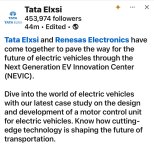Interesting reading all the comments on the financials. I didn’t expect much, in regard's to revenue, am surprised others did, to be honest.
I don’t believe that Brn management have mislead anyone. There’s been no promises or guarantees. Just people speculating. Over speculation can bring a lot of disappointment. It also allows down rampers to go wild when results are not that great.
I know that results have been a bit slower than what we hoped for but I do believe that the company had to be properly structured in order to move forward.
The company today is far different than what it was 3 years ago, even 2 years ago. Some people will understand that, others won’t.
Brn had no choice but to form partnerships. It’s was the only way that they could get their products out and flood the market. Everyone is talking about Brainchip atm.
If you do not understand what is going on atm, at least take the time to learn or move on. No point in continually bashing or speculating.
Just my opinion.
GLTAH
I don’t believe that Brn management have mislead anyone. There’s been no promises or guarantees. Just people speculating. Over speculation can bring a lot of disappointment. It also allows down rampers to go wild when results are not that great.
I know that results have been a bit slower than what we hoped for but I do believe that the company had to be properly structured in order to move forward.
The company today is far different than what it was 3 years ago, even 2 years ago. Some people will understand that, others won’t.
Brn had no choice but to form partnerships. It’s was the only way that they could get their products out and flood the market. Everyone is talking about Brainchip atm.
If you do not understand what is going on atm, at least take the time to learn or move on. No point in continually bashing or speculating.
Just my opinion.
GLTAH

